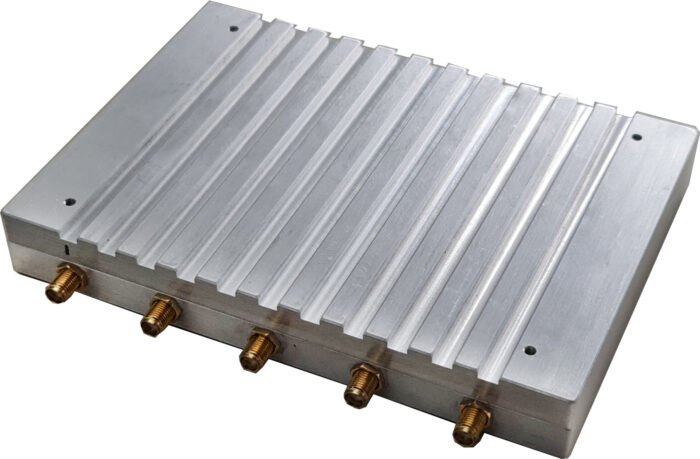KrakenSDR is a 5-tuner coherent software defined radio based on RTL-SDR. It is the successor to the KerberosSDR and will be crowdfunded on Crowd Supply in a couple of months time. Please sign up to the KrakenSDR Crowd Supply mailing list to be notified as soon as the campaign begins.

Passive Radar uses existing FM, TV or mobile phone transmitters. The signal from these transmitters reflects off objects such as road vehicles and aircraft. By using two antennas on two receive channels, and an algorithm to compare the reflected signal against a clean reference copy of the actual signal, we can achieve a radar like display of bi-static range vs doppler speed.
In this test KrakenSDR is used as a two antenna passive radar system. The reference antenna points towards a horizontally polarized 620 MHz DVB-T transmitter, and the surveillance antenna points towards an Airport.

Reflections of aircraft and road vehicles can be seen on the map as red dots/trails. Notice how we can also determine the overall neighborhood activity of road vehicles as we pointed out in a previous KerberosSDR post.
Of note is that we've placed the surveillance antenna in a vertically polarized configuration. With passive radar you want to keep the reference signal out of the surveillance channel, as ideally the surveillance channel only receives the reflections. Using the surveillance antenna in vertical polarization achieves 20dB attenuation of the horizontally polarized DVB-T signal. The reflections are assumed to be randomly polarized, so the vertically polarized antenna should pick up the reflection just the same no matter what polarization is used. This scheme woks especially well in our setup as the angle between the reference transmitter and target reflected objects is small.
This test uses the older KerberosSDR code (slightly modified to allow for trails), however new passive radar code is being worked on for the new KrakenSDR code base which will be released later this year. We expect the new code to also be able to make use of GPU accelerated CUDA hardware, such as the NVIDIA Jetson. This will allow for a much faster update rate and/or more processing gain.
The new KrakenSDR code will also try to make use of the additional three unused channels. With these extra channels we should be able to add a direction finding array that will help to plot on a map the actual location and elevation of the reflections.
KrakenSDR Passive Radar Demonstration 1
